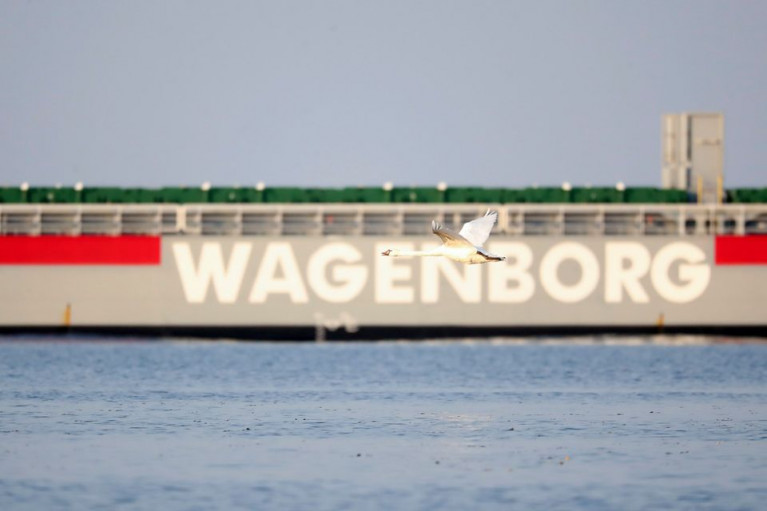A Dublin based ship management company's ice-strengthened multipurpose dry-cargo carrier was spotted at anchor in Dublin Bay today, writes Jehan Ashmore.
Such operators in Ireland are few and far between in regards to merchant shipping. The company concerned is the Corrib Shipping Group based in the south Co. Dublin suburb of Dundrum. The cargoship is due to enter Dublin Port on New Year's Day and berth at Ocean Pier.
Afloat also noted that the group was founded in 1995 and before this year finally draws to a close, such an occasion cannot be ignored given the company milestone of a 25th anniversary.
Since its inception Corrib has assembled a ship management team and employs professional officers and crew to man its vessels.Their fleet of ice-strenghthened ships sail as part of the Royal Wagenborg fleet and Wagenborg act as chartering agents for Corrib.
MV Jolyn had departed Cork Harbour yesterday and arrived in Dublin Bay this morning. The short-sea multipurpose dry cargo carrier has an Ice Class 1A and was built by the Shipyard Peters in Kampen in the Netherlands.
The 2007 built Dutch-flagged trader has a 3,640dwt and the following main dimensions where length overall (LOA) is 89.99m on a beam of of 12.5m and a draught drawing 5.31m.
As for propulsion the main engine is a Finnish manufactured Wartsila 9L20.
In addition Corrib's fleet includes a pair of identical ships, Cathy Jo and Cathma, again they too are of the same vessel type as applied to Jolyn along with an Ice Class 1A, but these vessels are larger. They are of 6,000dwt and measure 100.78 (LOA), a beam of 14m and a draught of 5.09m. Cathy Jo is currently in Palmones, Spain (close to Gibraltar) having departed Dordrecht from where relatively nearby in Amsterdam is Cathma which is for bound next for Hamina in Finland (see below the Ziltborg in a frozen Baltic).
Unlike the Jolyn, the pair were built in neighbouring Germany at the Ferus Smit shipyard in Leer, however their Dutch yard in Westerbroek is where 'A' class newbuilds, each of 8,500dwt is on order to Arklow Shipping. Less than a fortnight ago week, Afloat reported about Arklow Arrow, the fifth of six such ships so far was launched.
Another final member of the Corrib fleet, the former Viechtdiep in 2017 was added into a then four-strong fleet as the renamed Ziltborg, the largest fleetmember at 7,200dwt which too has an ice-class notation of 1A.
The owners of the 118 metre vessel are Royal Wagenborg which itself has a considerable fleet numbering 180 box-shaped ice-strenghtened vessels varying between 1,700 to 23,000 tonnes and all under the Dutch flag.
Ziltborg had entered service to offer clients worldwide trade carrying options such as forest products and (break-)bulk cargoes.

























